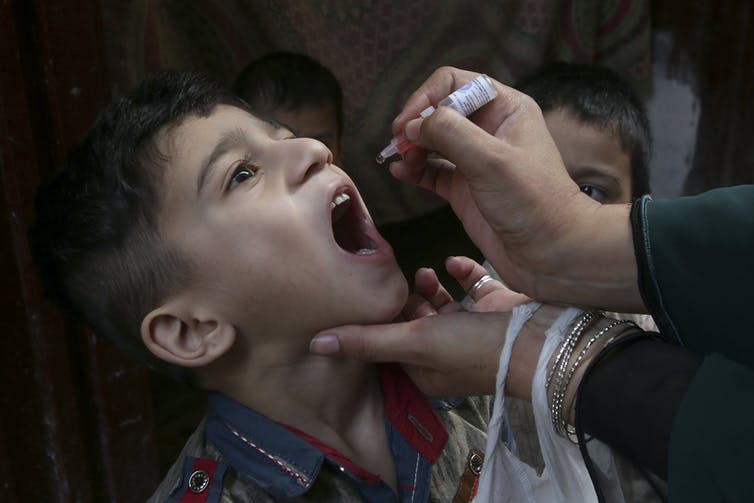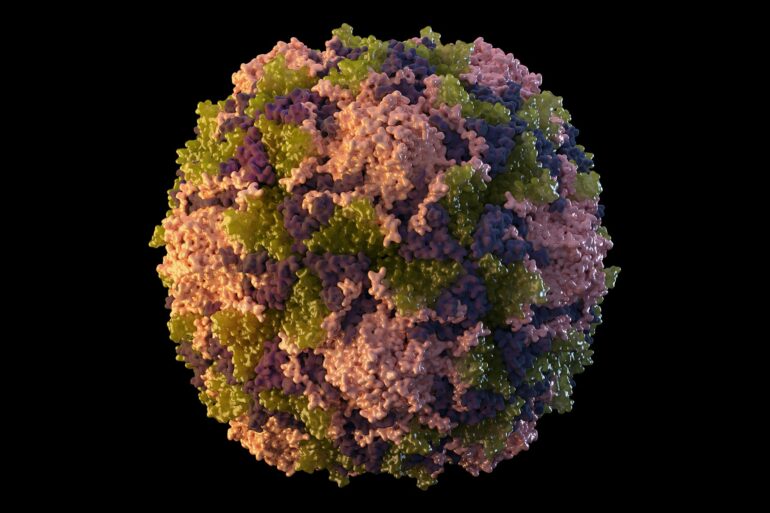The first case of polio in the U.S. since 2013 was announced by New York state health officials on July 21, 2022. The U.S. resident had not been vaccinated.
Polio was a common cause of paralysis in children before safe and effective vaccines were invented in the mid-20th century. Thanks to global vaccination campaigns, polio is now almost eradicated, with only 13 cases of endemic wild poliovirus reported in 2022 to date worldwide.
The New York patient reportedly contracted a form of polio that can be traced back to the live, but weakened, poliovirus used in the oral polio vaccine. This version of the vaccine has not been used in the U.S. since 2000. Health officials said the virus affecting the male patient, who has muscle weakness and paralysis, likely originated somewhere overseas, where oral vaccines are still administered.
William Petri is an infectious disease specialist and chair of the World Health Organization’s Polio Research Committee. Here he explains what vaccine-derived poliovirus is and why the inactivated polio vaccine administered in the U.S. today can’t cause it.
What are the two kinds of polio vaccine?
Vaccines introduce a harmless version of a pathogen to your body. The idea is that they train your immune system to fight off the real germ if you ever encounter it.
The oral polio vaccine, originally developed by Albert Sabin, uses a live but weakened poliovirus that one swallows in a sugar cube or droplet. Scientists weaken – or attenuate – the virus so it can no longer cause disease.
The other kind of polio vaccine was originally developed by Jonas Salk. It contains inactivated, dead virus. It is administered by an injection.
In the U.S., children receive the inactivated polio vaccine at 2, 4 and 6 months of age. It provides nearly complete protection from paralytic polio.

A boy in Pakistan receives a dose of the oral polio vaccine.
AP Photo/Muhammad Sajjad
How can the live vaccine lead to a case of polio?
The weakened form of the live virus in the oral vaccine cannot cause disease. However, because the vaccine is given orally, the weakened virus is excreted in the feces and can spread from someone who is vaccinated to their close contacts. If the weakened virus circulates person to person for long enough, it can mutate and regain its ability to cause paralysis.
The mutated virus can then infect people in communities with poor sanitation and low vaccination rates, causing disease and even paralysis.
This is an exceedingly rare occurrence. With more than 10 billion doses of the oral polio vaccine administered since 2000, there have been fewer than 800 cases of vaccine-derived polio reported.
Apparently, the current patient in New York was somehow exposed to a mutated poliovirus that had been transmitted after vaccination overseas. Earlier this summer, routine surveillance spotted vaccine-derived poliovirus in London’s sewage system, but no cases have been…
